Facilities
The Azoulay Research group is located in the Shelby Freland Thames Polymer Science Research Center (PSRC). The PSRC is a 106,000 square foot $30 M facility with over $30 M of research instrumentation, which provides comprehensive capabilities necessary to advance contemporary polymer science and engineering research.
The Azoulay group occupies six laboratories in this facility and is equipped with state-of-the-art equipment for the synthesis of new materials; optical, electronic, magnetic, molecular weight, and morphological characterization; and device fabrication and engineering capabilities.
The Azoulay Research group is located in the Shelby Freland Thames Polymer Science Research Center (PSRC). The PSRC is a 106,000 square foot $30 M facility with over $30 M of research instrumentation, which provides comprehensive capabilities necessary to advance contemporary polymer science and engineering research.
The Azoulay group occupies six laboratories in this facility and is equipped with state-of-the-art equipment for the synthesis of new materials; optical, electronic, magnetic, molecular weight, and morphological characterization; and device fabrication and engineering capabilities.

Synthesis Laboratories
Our synthetic laboratories are located in PSRC 231, 232, 234, and 236. This space houses 14 fume hoods, numerous high vacuum manifolds, 2 Innovative Technology 4-port glove boxes, a Buchi extraction system, four Buchi rotary evaporators, a CEM Discover microwave synthesis system with sample automation, a Teledyne Isco CombiFlash flash-chromatography system, large refrigerators, freezers, ovens, vacuum ovens, a sonicator, a centrifuge, and a dishwasher for demanding synthetic work. Two GPC systems are available: A PL-GPC 220 High Temperature GPC/SEC system with refractive index (RI), viscometer, dual wavelength light scattering detectors and high temperature sample preparation system. A Waters ACQUITY Advanced Polymer Chromatography (APC) System with RI detector, viscometer, dual wavelength light scattering (RALS/LALS), UV/Visible/NIR photodiode array, and evaporative light scattering detection. A fraction collector is also available for subsequent characterization of fractions.
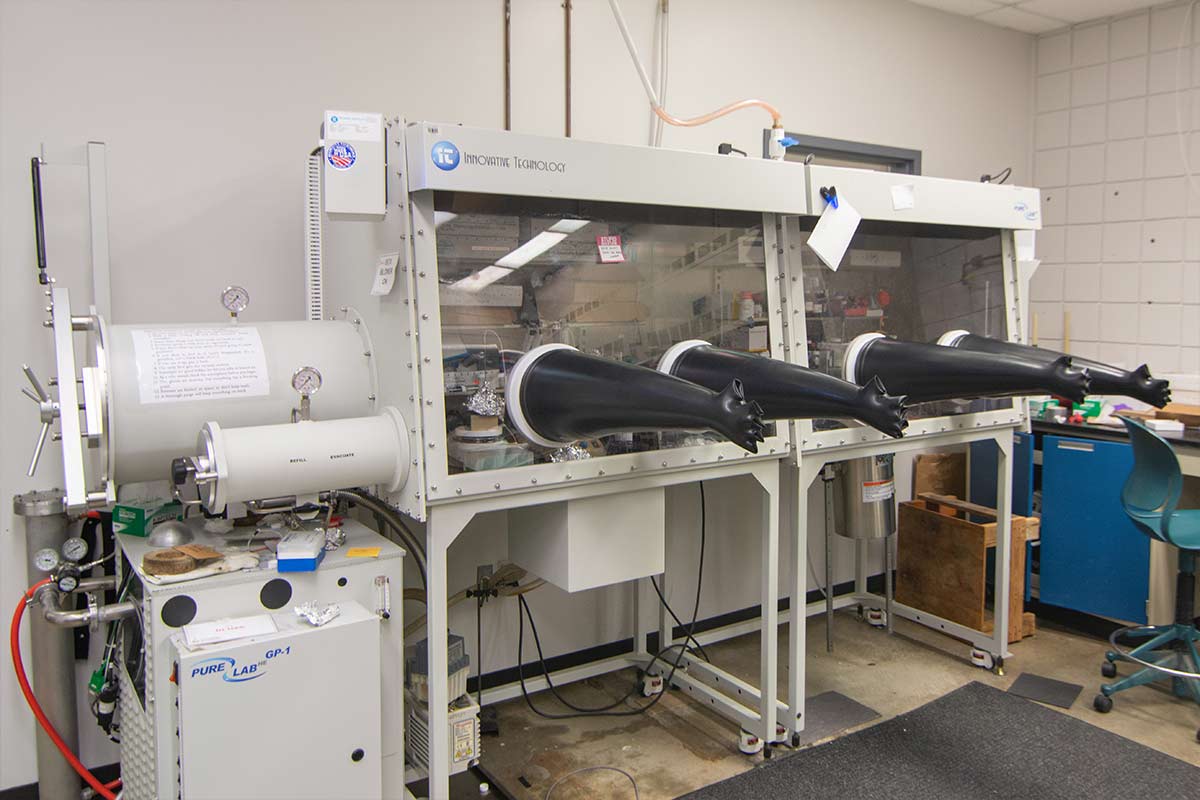
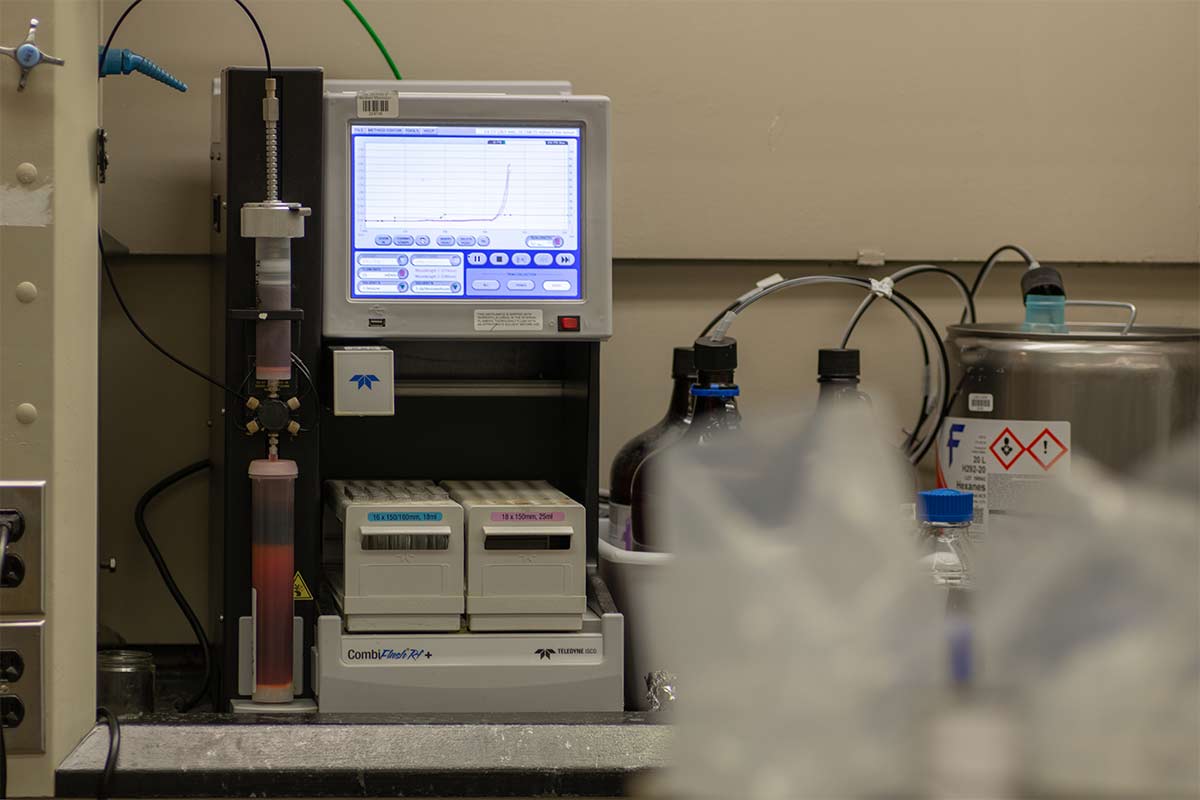
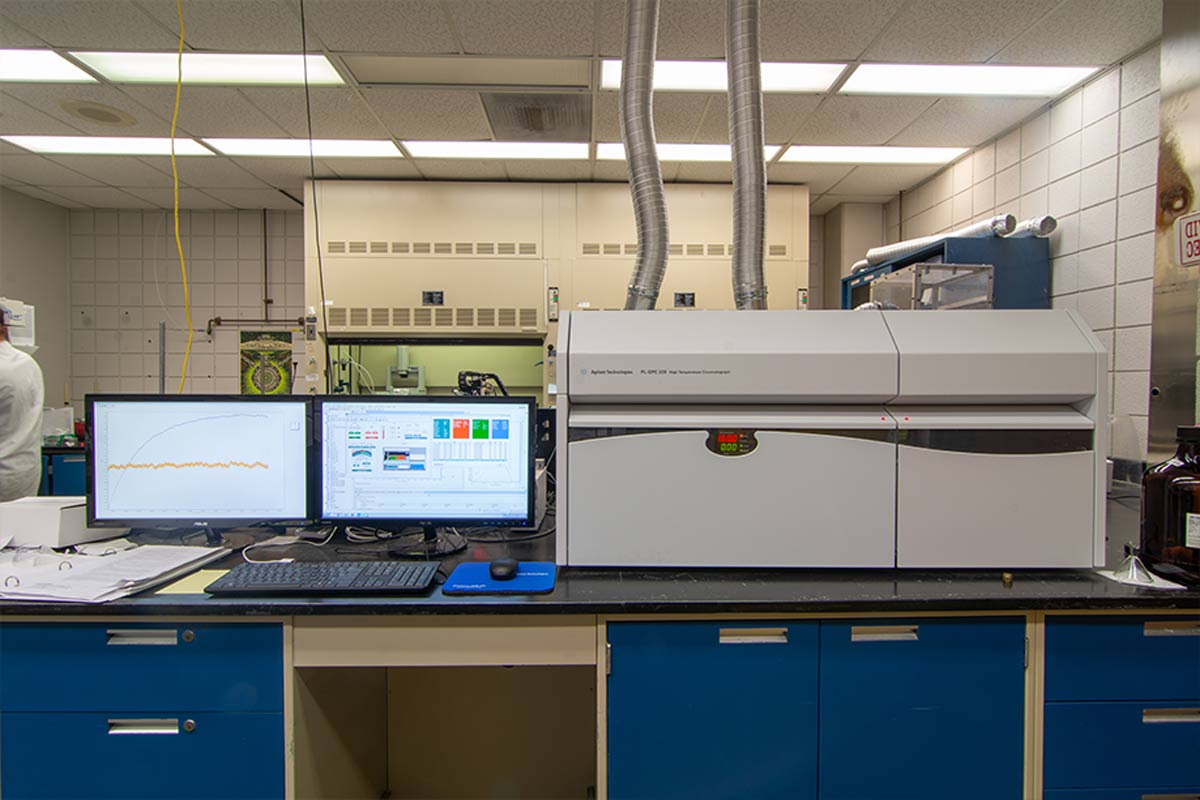
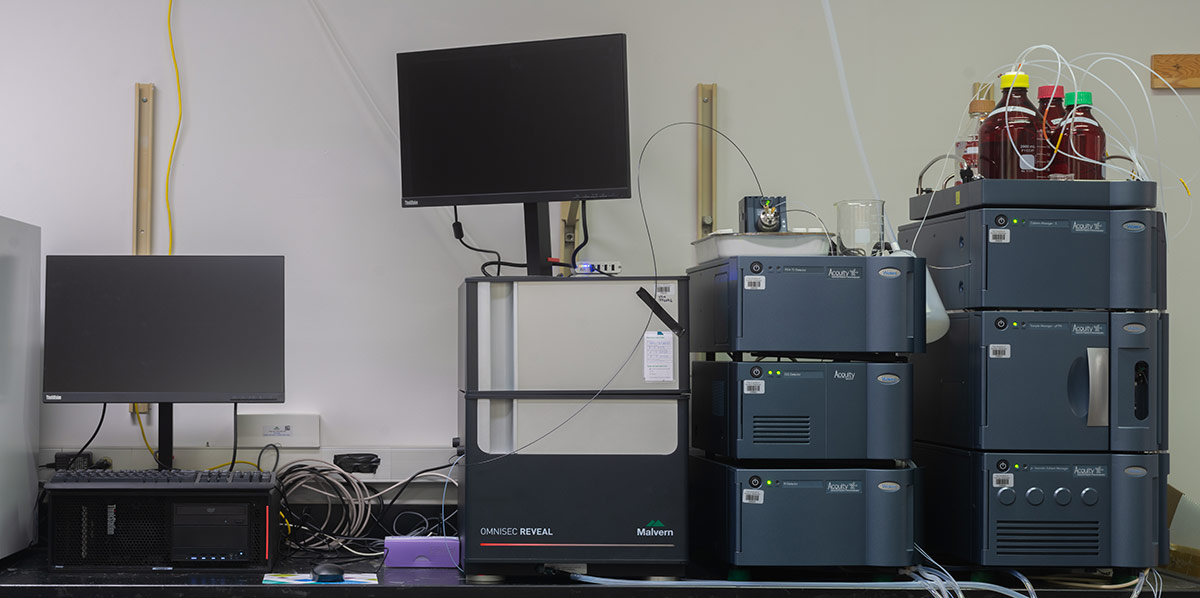

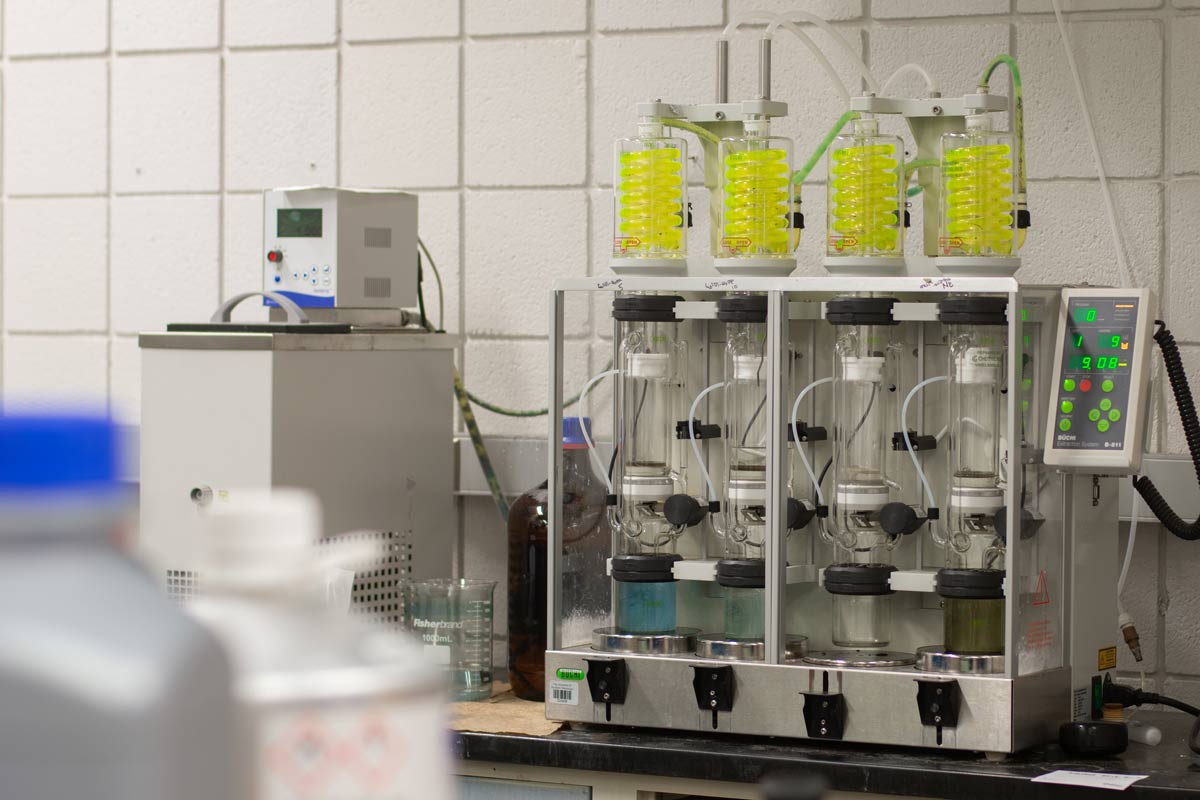
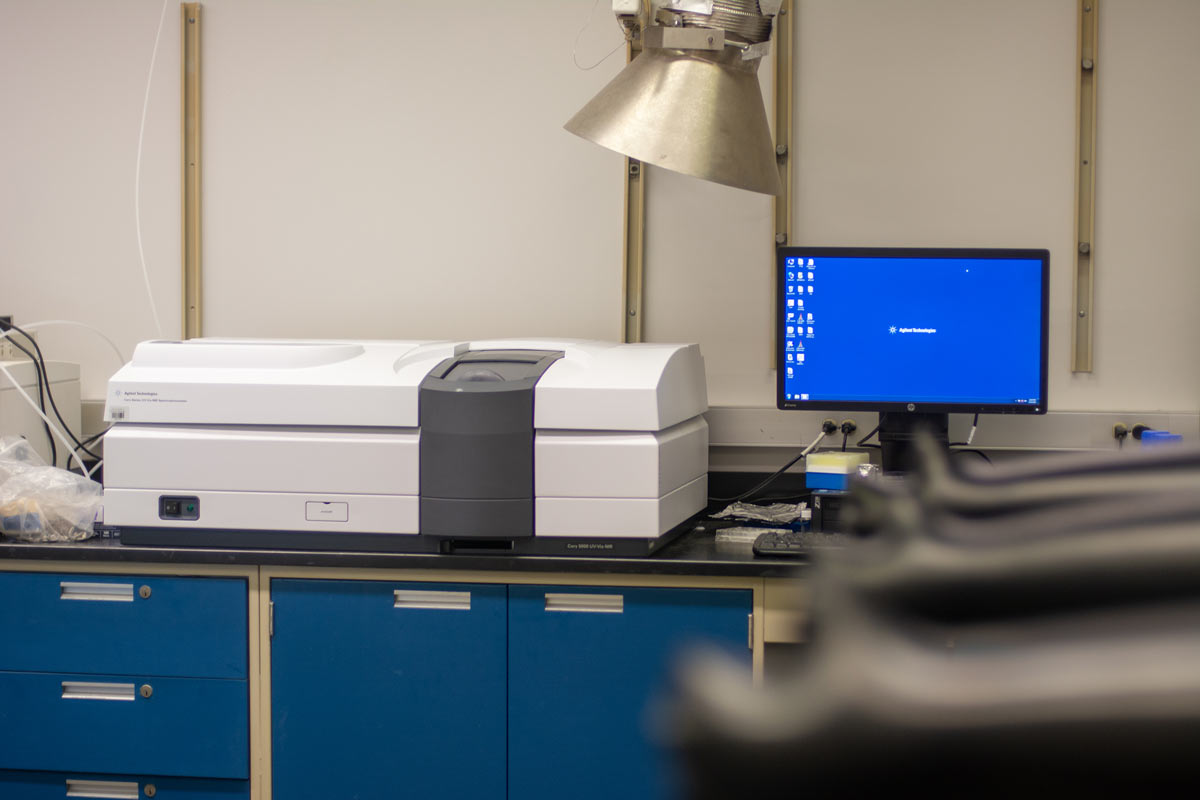

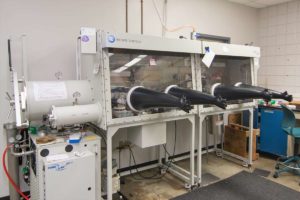
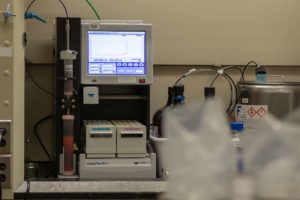
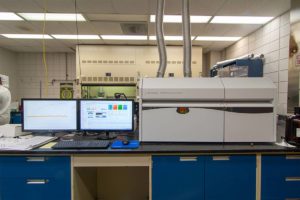
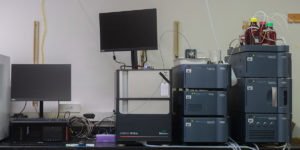
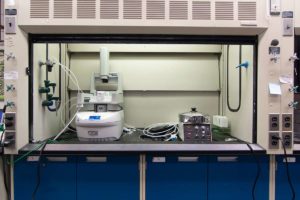
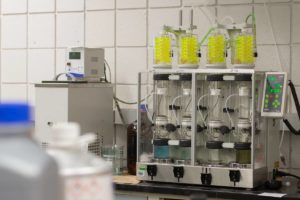
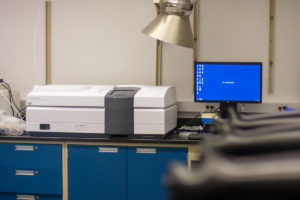

Synthesis Laboratories
Our synthetic laboratories are located in PSRC 231, 232, 234, and 236. This space houses 14 fume hoods, numerous high vacuum manifolds, 2 Innovative Technology 4-port glove boxes, a Buchi extraction system, four Buchi rotary evaporators, a CEM Discover microwave synthesis system with sample automation, a Teledyne Isco CombiFlash flash-chromatography system, large refrigerators, freezers, ovens, vacuum ovens, a sonicator, a centrifuge, and a dishwasher for demanding synthetic work. Two GPC systems are available: A PL-GPC 220 High Temperature GPC/SEC system with refractive index (RI), viscometer, dual wavelength light scattering detectors and high temperature sample preparation system. A Waters ACQUITY Advanced Polymer Chromatography (APC) System with RI detector, viscometer, dual wavelength light scattering (RALS/LALS), UV/Visible/NIR photodiode array, and evaporative light scattering detection. A fraction collector is also available for subsequent characterization of fractions.
















Synthesis Laboratories
Our synthetic laboratories are located in PSRC 231, 232, 234, and 236. This space houses 14 fume hoods, numerous high vacuum manifolds, 2 Innovative Technology 4-port glove boxes, a Buchi extraction system, four Buchi rotary evaporators, a CEM Discover microwave synthesis system with sample automation, a Teledyne Isco CombiFlash flash-chromatography system, large refrigerators, freezers, ovens, vacuum ovens, a sonicator, a centrifuge, and a dishwasher for demanding synthetic work. Two GPC systems are available: A PL-GPC 220 High Temperature GPC/SEC system with refractive index (RI), viscometer, dual wavelength light scattering detectors and high temperature sample preparation system. A Waters ACQUITY Advanced Polymer Chromatography (APC) System with RI detector, viscometer, dual wavelength light scattering (RALS/LALS), UV/Visible/NIR photodiode array, and evaporative light scattering detection. A fraction collector is also available for subsequent characterization of fractions.
















Device Laboratory
Device Laboratory. The Azoulay and Gu Research Groups share laboratories located in PSRC 237/238 and 241. These labs are equipped with a glovebox integrated EvoVac PVD system with thermal evaporation, electron beam evaporation, and RF and DC sputtering. A Bruker 80v vacuum FTIR spectrometer equipped with optical components to connect the mid and far IR (10 cm-1), Agilent CARY 5000 UV-Vis-NIR (175-3300 nm), and characterization capabilities (including diode, transistor, photodetector, and solar cell) that extend into the IR provide tools to study new detection and transduction materials and engineer state of the art devices. A cryogen-free AC/DC Superconducting Quantum Interference Device (SQUID) magnetometer is indispensable for evaluating the magnetic properties of materials and studying electron spin interactions. A micromanipulated cryogenic probe station with vertical field superconducting magnet provides precise measurements over a broad range of temperature and magnetic field conditions for new materials. A 10-meter Xeuss 2.0 SAXS/WAXS laboratory beamline equipped with a copper source and pilatus 1M detector offers in house morphology characterization.
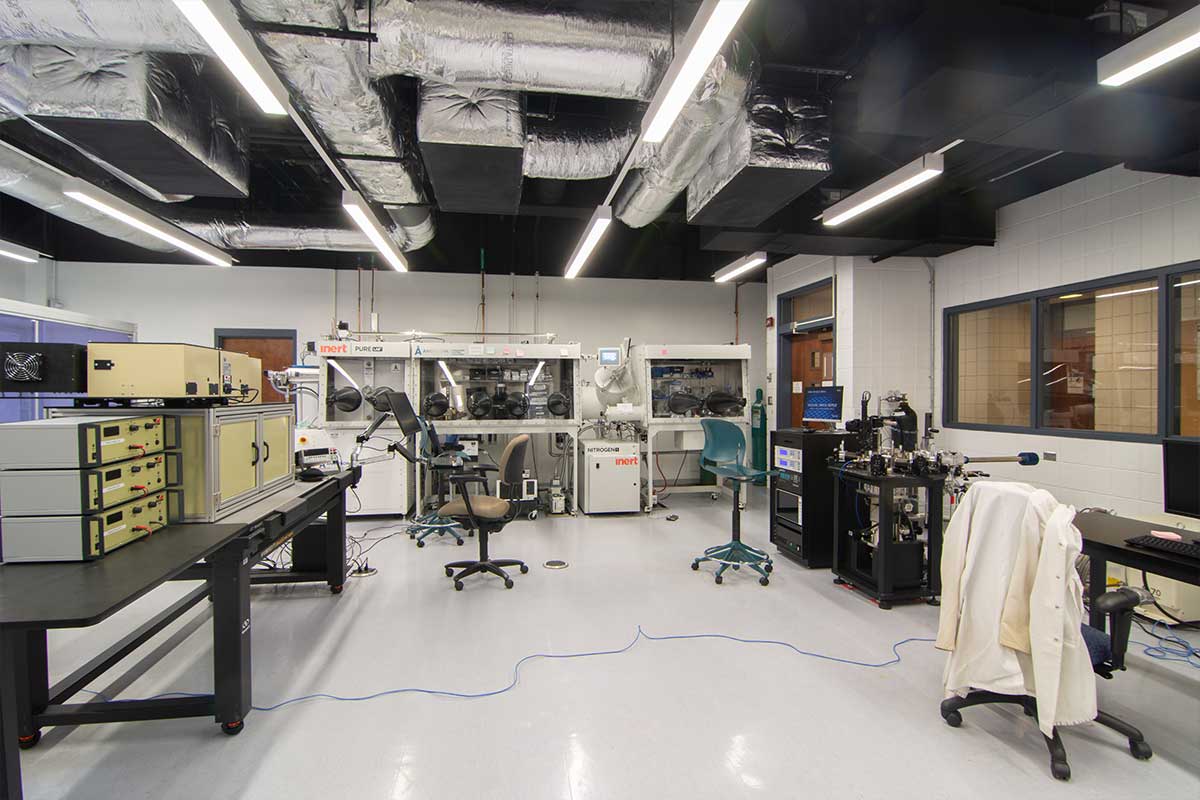
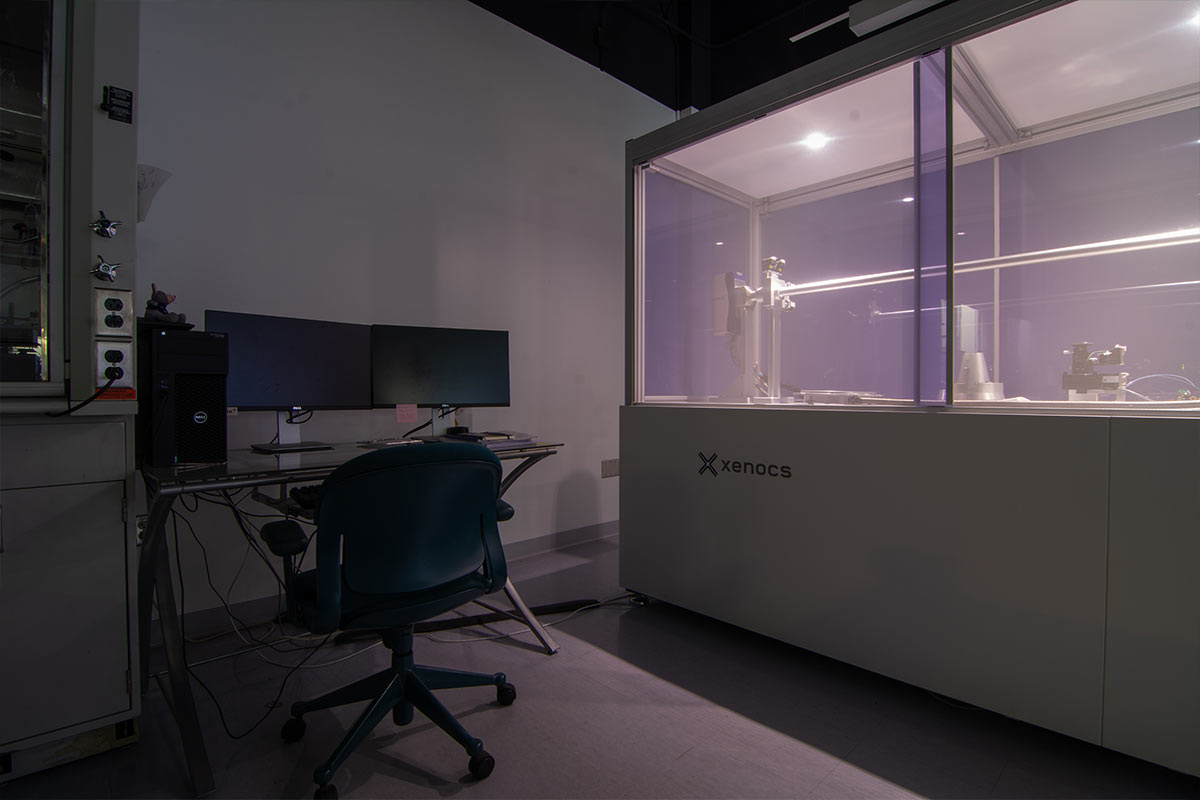
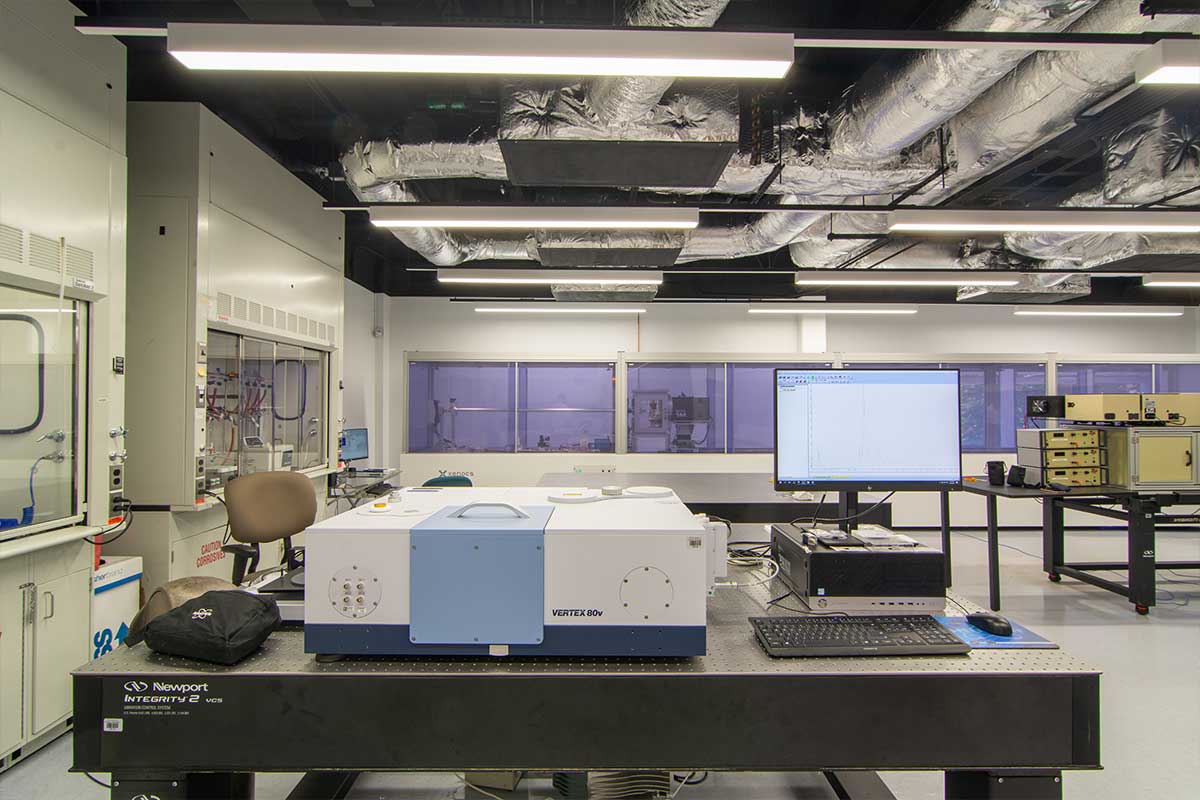
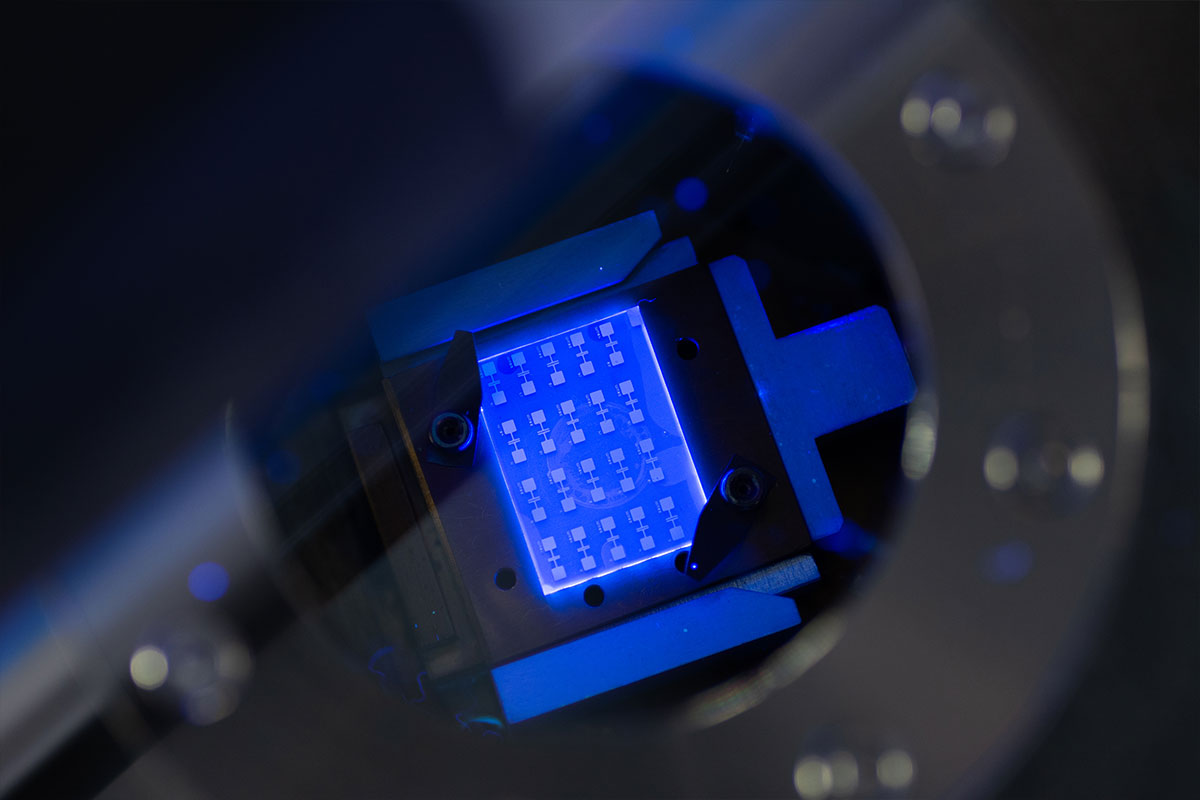
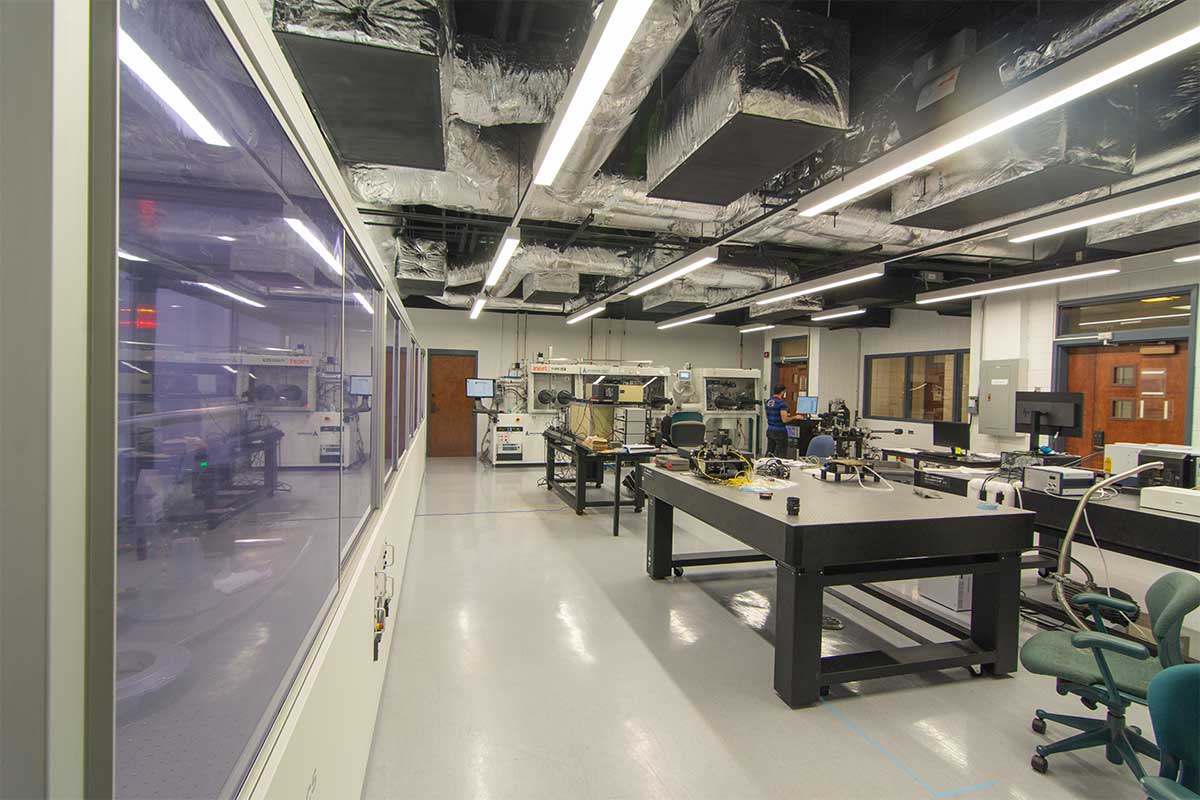
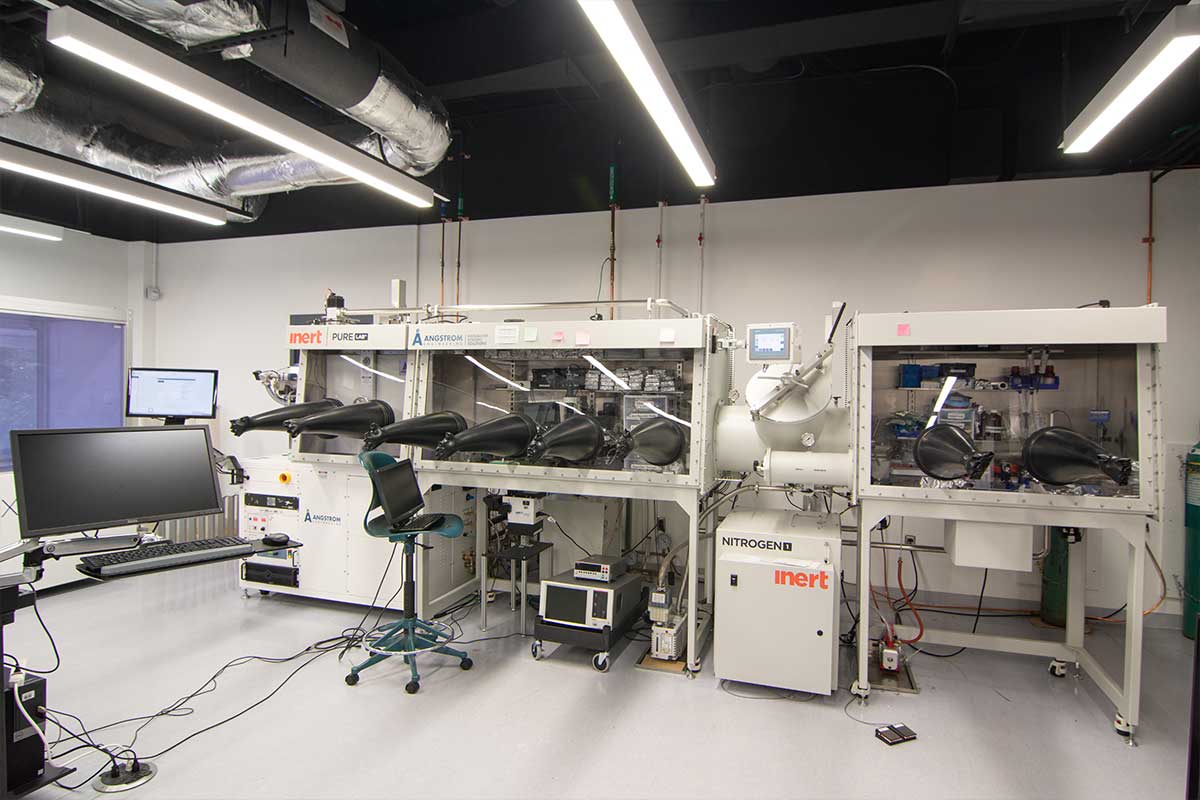
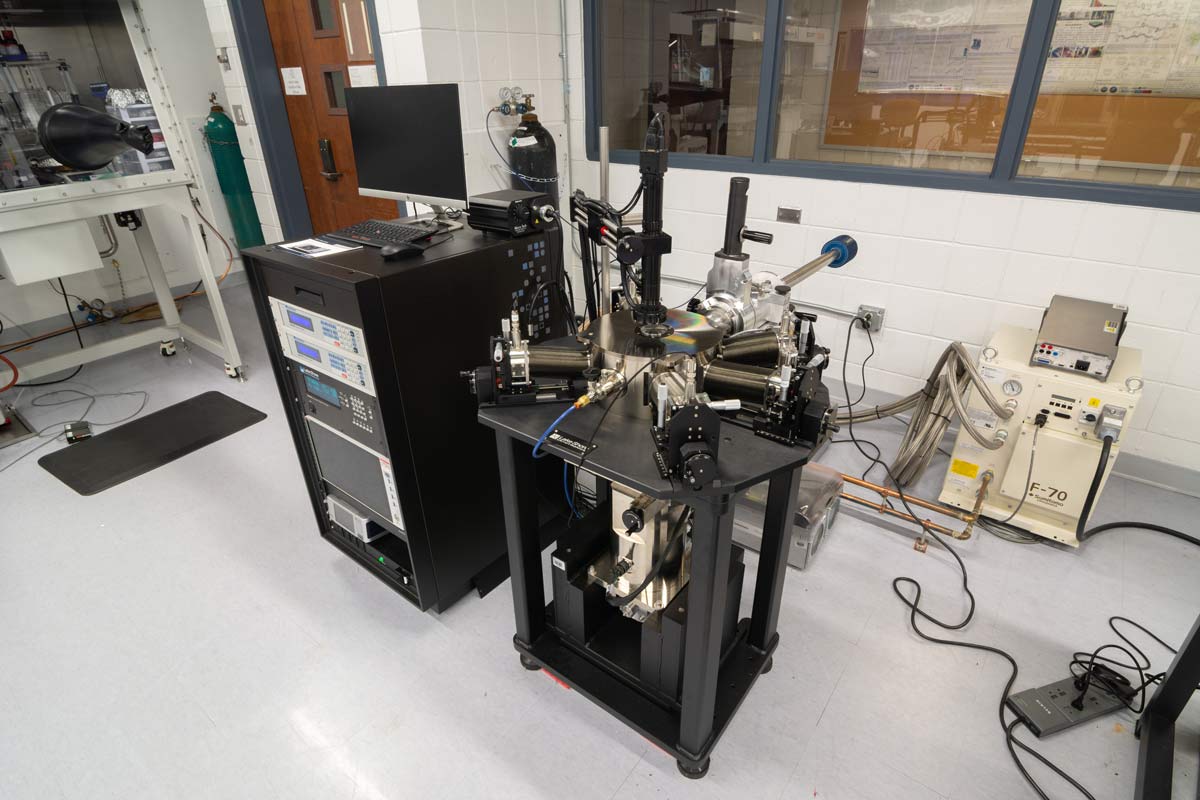
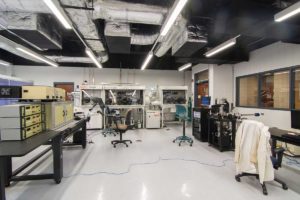
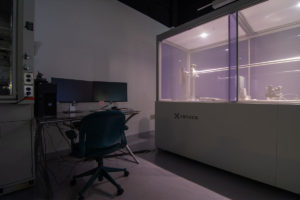
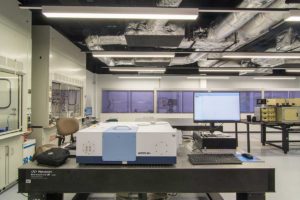
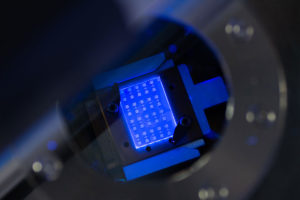
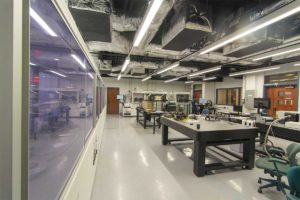
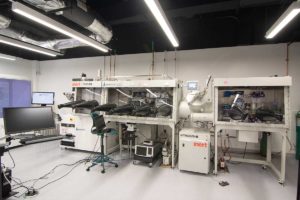
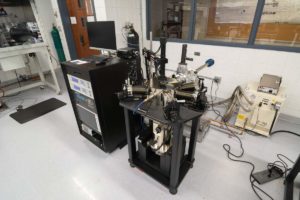
Device Laboratory
Device Laboratory. The Azoulay and Gu Research Groups share laboratories located in PSRC 237/238 and 241. These labs are equipped with a glovebox integrated EvoVac PVD system with thermal evaporation, electron beam evaporation, and RF and DC sputtering. A Bruker 80v vacuum FTIR spectrometer equipped with optical components to connect the mid and far IR (10 cm-1), Agilent CARY 5000 UV-Vis-NIR (175-3300 nm), and characterization capabilities (including diode, transistor, photodetector, and solar cell) that extend into the IR provide tools to study new detection and transduction materials and engineer state of the art devices. A cryogen-free AC/DC Superconducting Quantum Interference Device (SQUID) magnetometer is indispensable for evaluating the magnetic properties of materials and studying electron spin interactions. A micromanipulated cryogenic probe station with vertical field superconducting magnet provides precise measurements over a broad range of temperature and magnetic field conditions for new materials. A 10-meter Xeuss 2.0 SAXS/WAXS laboratory beamline equipped with a copper source and pilatus 1M detector offers in house morphology characterization.














Device Laboratory
Device Laboratory. The Azoulay and Gu Research Groups share laboratories located in PSRC 237/238 and 241. These labs are equipped with a glovebox integrated EvoVac PVD system with thermal evaporation, electron beam evaporation, and RF and DC sputtering. A Bruker 80v vacuum FTIR spectrometer equipped with optical components to connect the mid and far IR (10 cm-1), Agilent CARY 5000 UV-Vis-NIR (175-3300 nm), and characterization capabilities (including diode, transistor, photodetector, and solar cell) that extend into the IR provide tools to study new detection and transduction materials and engineer state of the art devices. A cryogen-free AC/DC Superconducting Quantum Interference Device (SQUID) magnetometer is indispensable for evaluating the magnetic properties of materials and studying electron spin interactions. A micromanipulated cryogenic probe station with vertical field superconducting magnet provides precise measurements over a broad range of temperature and magnetic field conditions for new materials. A 10-meter Xeuss 2.0 SAXS/WAXS laboratory beamline equipped with a copper source and pilatus 1M detector offers in house morphology characterization.
















